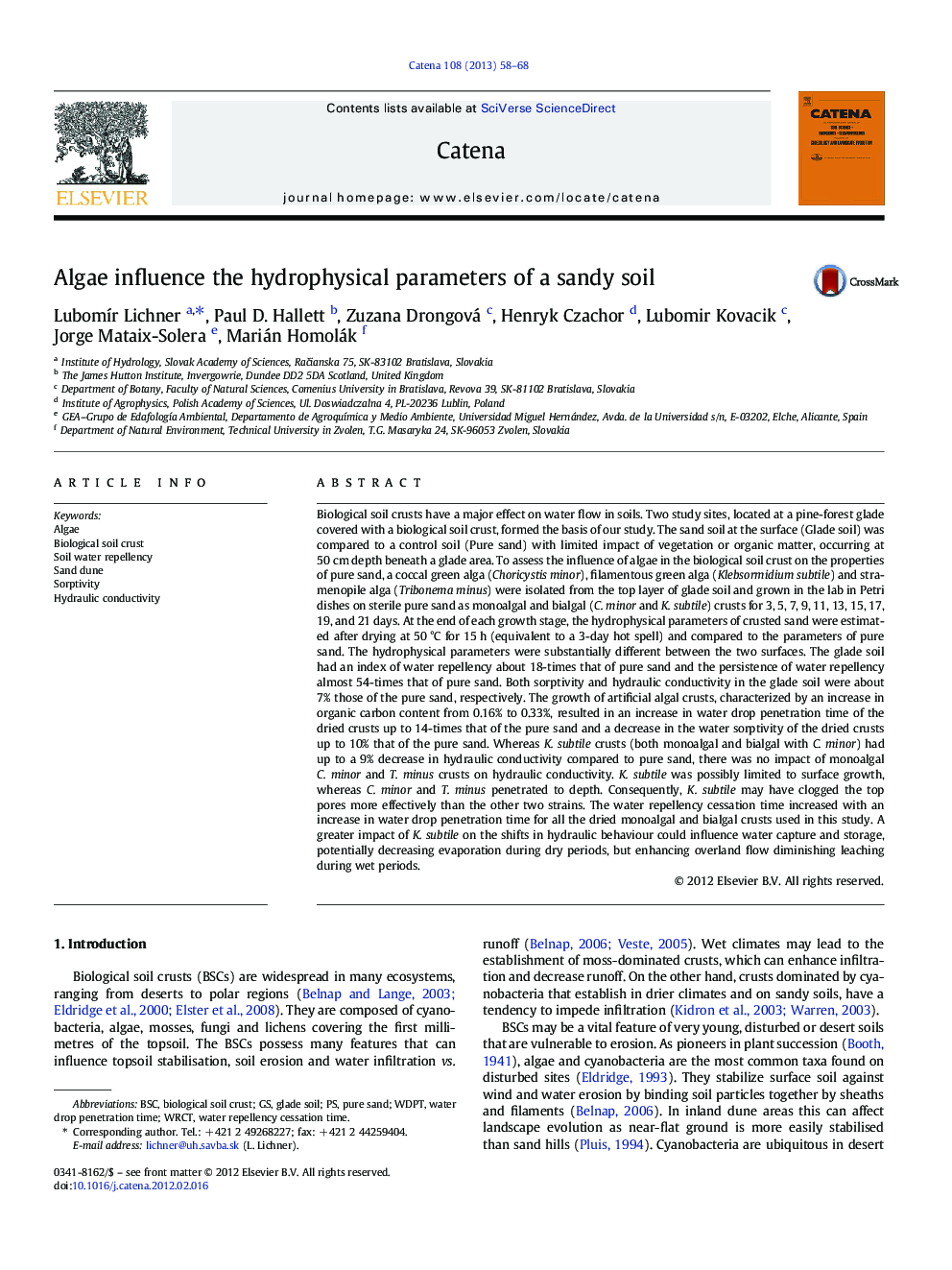| کد مقاله | کد نشریه | سال انتشار | مقاله انگلیسی | نسخه تمام متن |
|---|---|---|---|---|
| 4571600 | 1629244 | 2013 | 11 صفحه PDF | دانلود رایگان |

Biological soil crusts have a major effect on water flow in soils. Two study sites, located at a pine-forest glade covered with a biological soil crust, formed the basis of our study. The sand soil at the surface (Glade soil) was compared to a control soil (Pure sand) with limited impact of vegetation or organic matter, occurring at 50 cm depth beneath a glade area. To assess the influence of algae in the biological soil crust on the properties of pure sand, a coccal green alga (Choricystis minor), filamentous green alga (Klebsormidium subtile) and stramenopile alga (Tribonema minus) were isolated from the top layer of glade soil and grown in the lab in Petri dishes on sterile pure sand as monoalgal and bialgal (C. minor and K. subtile) crusts for 3, 5, 7, 9, 11, 13, 15, 17, 19, and 21 days. At the end of each growth stage, the hydrophysical parameters of crusted sand were estimated after drying at 50 °C for 15 h (equivalent to a 3-day hot spell) and compared to the parameters of pure sand. The hydrophysical parameters were substantially different between the two surfaces. The glade soil had an index of water repellency about 18-times that of pure sand and the persistence of water repellency almost 54-times that of pure sand. Both sorptivity and hydraulic conductivity in the glade soil were about 7% those of the pure sand, respectively. The growth of artificial algal crusts, characterized by an increase in organic carbon content from 0.16% to 0.33%, resulted in an increase in water drop penetration time of the dried crusts up to 14-times that of the pure sand and a decrease in the water sorptivity of the dried crusts up to 10% that of the pure sand. Whereas K. subtile crusts (both monoalgal and bialgal with C. minor) had up to a 9% decrease in hydraulic conductivity compared to pure sand, there was no impact of monoalgal C. minor and T. minus crusts on hydraulic conductivity. K. subtile was possibly limited to surface growth, whereas C. minor and T. minus penetrated to depth. Consequently, K. subtile may have clogged the top pores more effectively than the other two strains. The water repellency cessation time increased with an increase in water drop penetration time for all the dried monoalgal and bialgal crusts used in this study. A greater impact of K. subtile on the shifts in hydraulic behaviour could influence water capture and storage, potentially decreasing evaporation during dry periods, but enhancing overland flow diminishing leaching during wet periods.
► Biological soil crust affected hydrophobicity, sorptivity and conductivity of soil.
► Artificial algal crust affected hydrophobicity, sorptivity and conductivity of sand.
► Water repellency cessation time depends on WDPT and thickness of biological crust.
Journal: CATENA - Volume 108, September 2013, Pages 58–68